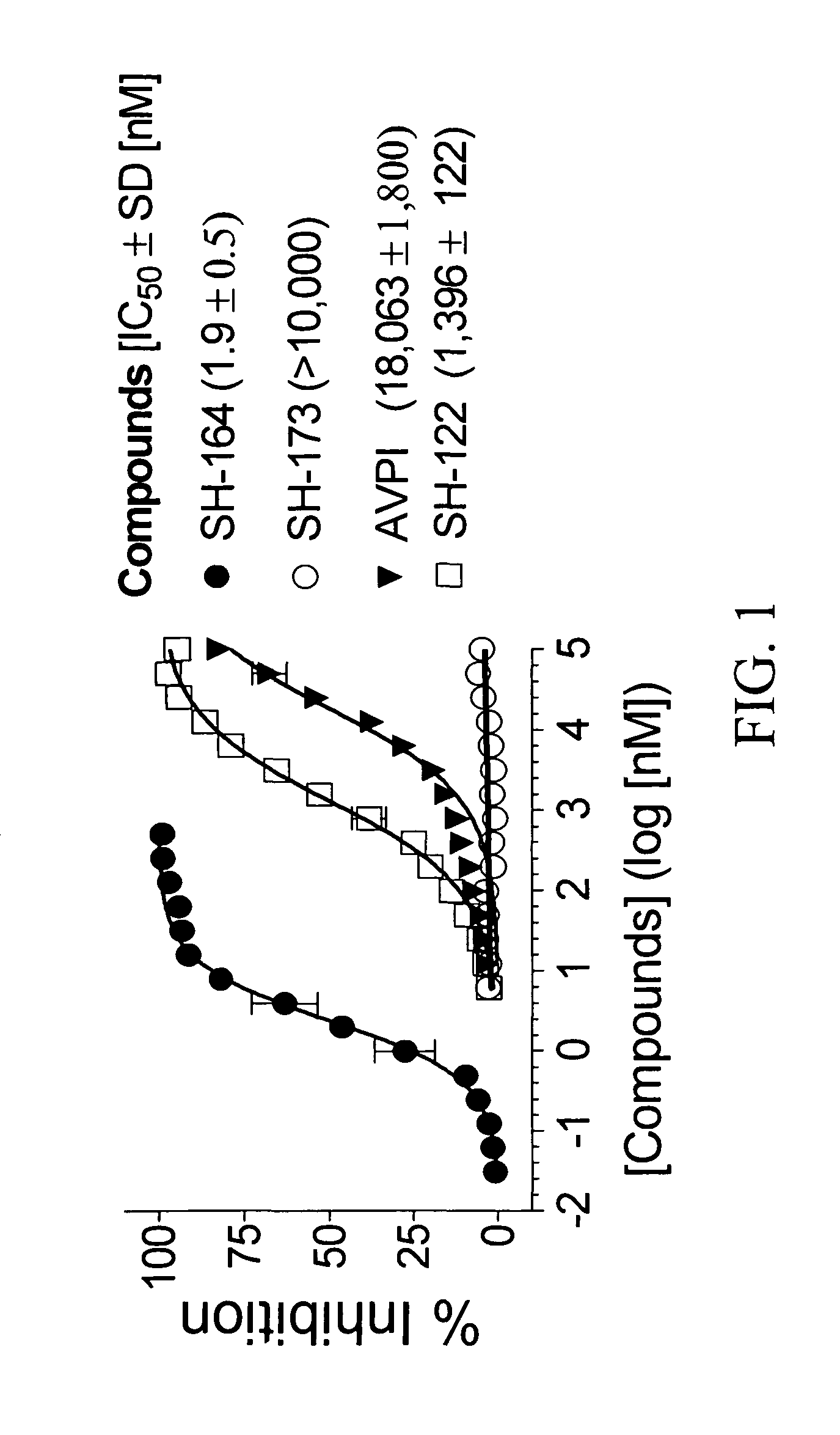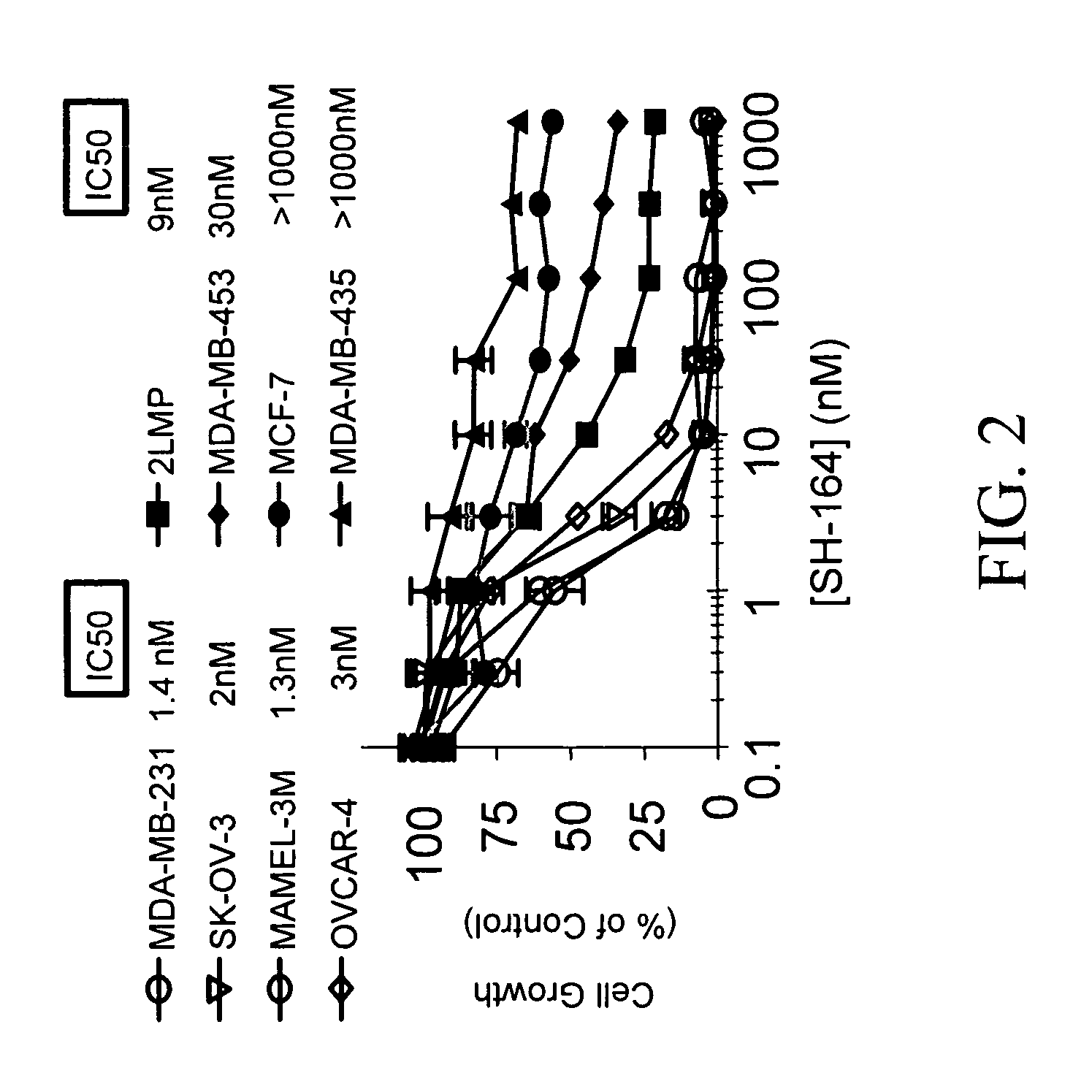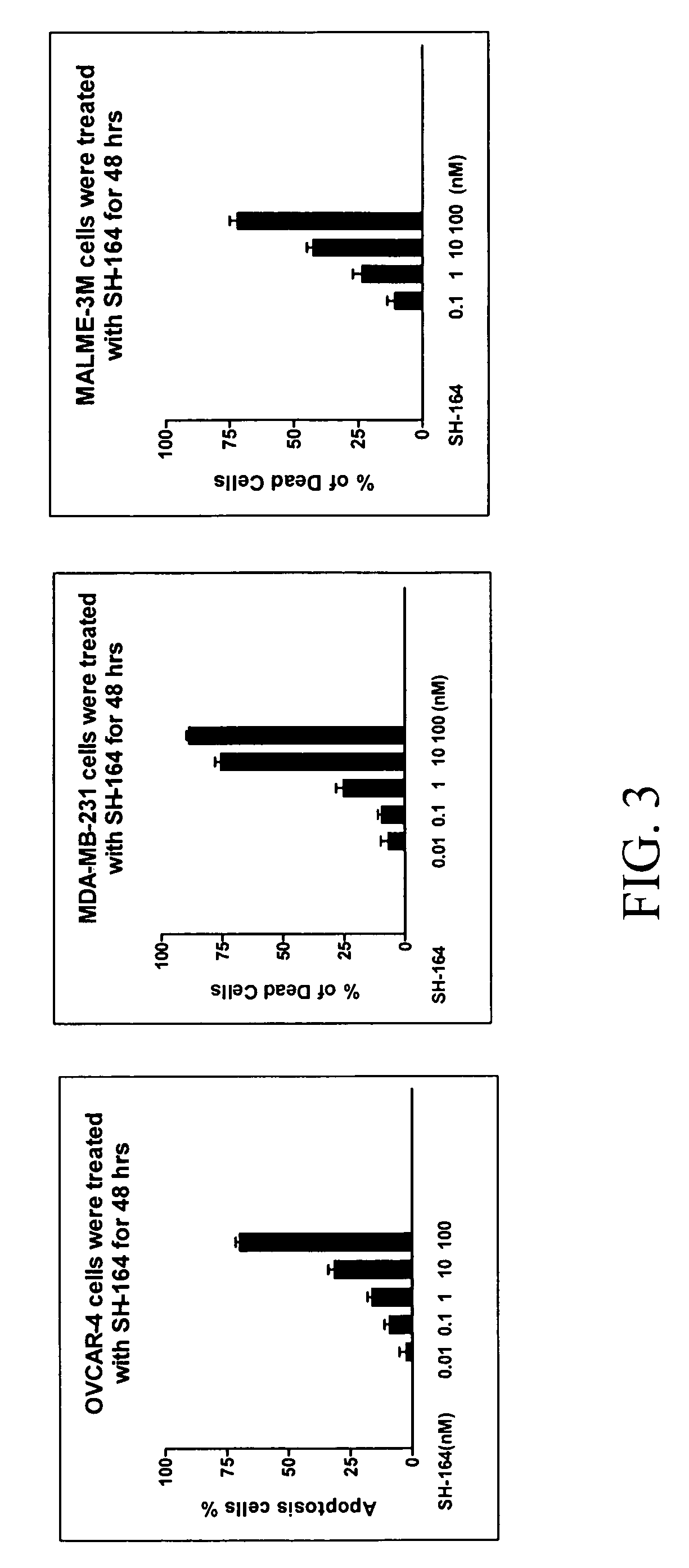Bivalent SMAC mimetics and the uses thereof
a peptide-based inhibitor and bivalent technology, applied in the field of medicinal chemistry, can solve the problems of poor cell permeability, poor in vivo stability, intrinsic limitations of peptide-based inhibitors as potentially useful therapeutic agents, etc., and achieve the effect of increasing expression
- Summary
- Abstract
- Description
- Claims
- Application Information
AI Technical Summary
Benefits of technology
Problems solved by technology
Method used
Image
Examples
example 1
Synthesis of Bivalent Smac Mimetics
[0295]General Methods: NMR spectra were acquired at a proton frequency of 300 MHz. 1H chemical shifts are reported with Me4Si (0.00 ppm), CHCl3 (7.26 ppm), CD2HOD (3.31 ppm), or DHO 04.79 ppm) as internal standards. 13C chemical shifts are reported with CDCl3 (77.00 ppm), CD3OD (49.00 ppm), or 1,4-dioxane (67.16 ppm) as internal standards. Optical rotations were measured at room temperature.
General Procedure A (Condensation):
[0296]To a solution of the two substrates in CH2Cl2 (20 mg / mL for the minor substrate) was added EDC (1.1 eq per amino group), HOBt (1.1 eq per amino group) and N,N-diisopropylethyl amine (4 eq per amino group) at 0° C. with stirring. The mixture was stirred at room temperature for eight hours and then condensed. The residue was purified by chromatography to give the product.
General Procedure B (Click Chemistry):
[0297]To a solution of CuSO4 (10 mg / mL) was added (+)-sodium L-ascorbate (2 eq). The mixture was shaken until the col...
example 2
Synthesis of DQ-24, SH-143, SH-155 and SH-142
[0299]Compounds DQ-24, SH-143, SH-155 and SH-142 were synthesized according to Scheme I.
[0300]
[0301]Selective protection of the amino group in L-phenylglycinol 1 with trifluoroacetic anhydride gave an alcohol 2. Alkylation of 2 with propargyl bromide yielded an alkyne 3. Reaction of 2 with methanesulfonyl chloride followed by substitution of the resulted mesylate with NaN3 furnished an azide 4. Cycloaddition of 3 and 4 under the catalyzation of CuSO4-(+)-sodium-L-ascorbate followed by removal of the trifluoro acetyl groups afforded a diamine 5.
[0302]Alkylation of 2 with benzyl 2-bromoethyl ether followed by hydrolysis of the benzyl protecting group furnished an alcohol. Reaction of this alcohol with methanesulfonyl chloride followed by substitution of the resulted mesylate with NaN3 furnished azide 6. Cycloaddition of 6 with 3 under the catalyzation of CuSO4-(+)-sodium-L-ascorbate followed by removal of the trifluoro acetyl groups afforde...
example 3
Synthesis of SH-156, SH-158, SH-159, SH-164, SH-165, SH-166 and SH-167
[0328]Compounds SH-156, SH-158, SH-159, SH-164, SH-165, SH-166 and SH-167 were synthesized according to Scheme III.
[0329]
[0330]The chiral amine 17 can be prepared according to literature reported methods from compound 16 (Messina, et al., J. Org. Chem., 64:3767 (1999)). Condensation of acid 15 with chiral amine 17 followed by deprotection of the Boc protecting group with HCl in methanol yielded an ammonium salt. Condensation of this salt with L-N-Boc-N-methyl alanine furnished intermediate 18. Cycloaddition of 18 with corresponding diazide under the catalyzation of CuSO4-(+)-sodium-L-ascorbate respectively followed by deprotection of the Boc protecting group gave designed bivalent Smac mimetics SH-156, SH-158, SH-159, SH-164, SH-165, SH-166 and SH-167. The efficiency of the synthetic scheme for each compound is shown in Table 3.
[0331]
TABLE 3Yield (%, overNametwo steps)SH-15663SH-15865SH-15961SH-16462SH-16559SH-166...
PUM
| Property | Measurement | Unit |
|---|---|---|
| length | aaaaa | aaaaa |
| length | aaaaa | aaaaa |
| 1H chemical shifts | aaaaa | aaaaa |
Abstract
Description
Claims
Application Information
 Login to View More
Login to View More - R&D
- Intellectual Property
- Life Sciences
- Materials
- Tech Scout
- Unparalleled Data Quality
- Higher Quality Content
- 60% Fewer Hallucinations
Browse by: Latest US Patents, China's latest patents, Technical Efficacy Thesaurus, Application Domain, Technology Topic, Popular Technical Reports.
© 2025 PatSnap. All rights reserved.Legal|Privacy policy|Modern Slavery Act Transparency Statement|Sitemap|About US| Contact US: help@patsnap.com



